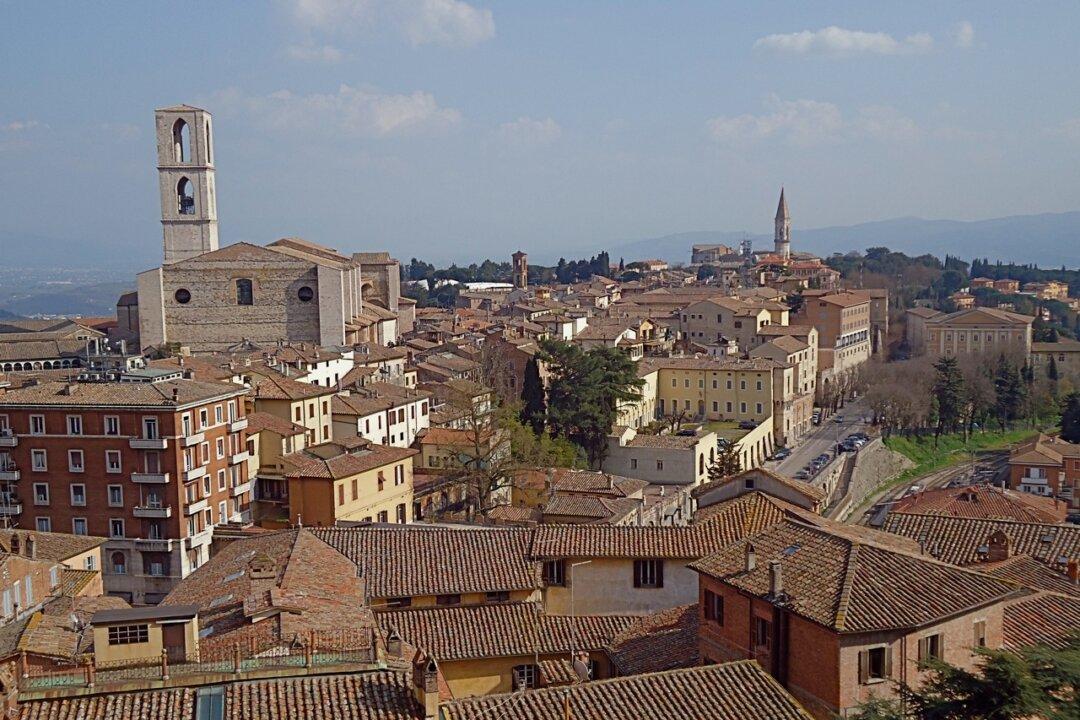No one knows exactly how old the Italian city of Perugia is. Built on a mountaintop about 4,000 years ago by an ancient tribe called the Umbrians, it was later conquered by the Etruscans, the Romans, and in 1540 by Pope Paul III. He destroyed the residences of the town’s wealthy families and built a fortress, the Rocca Paolina, on top of them. The bastions of the fortress still stand.
Burned, ravaged, reduced to rubble and rebuilt, Perugia is a layer cake of cultures and civilizations. I counted each layer as I climbed from the lower town toward the upper through a modern tunnel that pierced the rock on which it was built. In the 1930’s excavations were begun here uncovering Etruscan walls and burial grounds, Roman remains, and entire rooms of Renaissance palaces that had been swallowed up by the Pope’s fortress.





